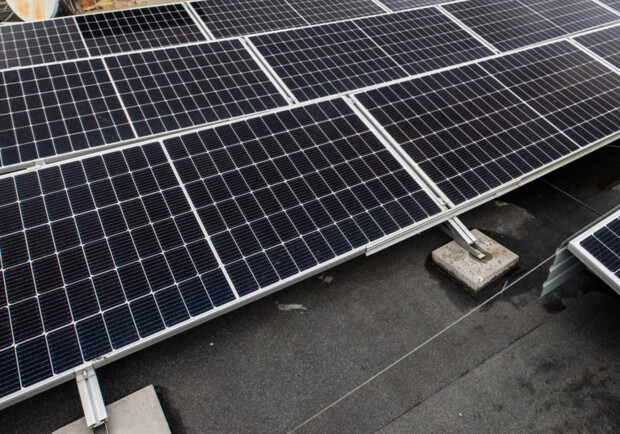
Lorem ipsum dolor sit amet consectetur. Rhoncus enim urna at pharetra turpis habitasse gravida nibh. Enim gravida feugiat et vulputate eget sed egestas ornare blandit. Cras libero nullam sed egestas. Amet dolor id arcu suspendisse justo felis varius. Vivamus scelerisque semper eleifend pulvinar laoreet ultrices dui. Laoreet mattis enim ipsum non eget. Ultricies enim feugiat iaculis viverra pellentesque. Nibh fusce in nec enim.At amet quis at praesent arcu convallis. Adipiscing sodales urna adipiscing amet. Tortor convallis aliquam arcu senectus ipsum at placerat. Posuere nunc pellentesque molestie quis molestie nisl turpis. Sed varius quis odio purus praesent. Et viverra arcu nulla vitae morbi commodo dictumst in. Mi turpis accumsan vitae vitae pulvinar quis arcu ac a. Tempor pretium sapien dui integer ac eu ut sed. Ac venenatis a pharetra ut. Erat turpis dignissim mauris lobortis.
Solar energy has become one of the most effective ways to reduce operating costs and increase the energy independence of commercial buildings. Successful solar panel installation begins long before the structure is actually installed: during roof preparation, extensive work is performed, conditions are assessed, mounting and electrical solutions are chosen, and potential economic benefits are calculated. This guide provides a detailed overview of the steps required to prepare a commercial roof for solar panel installation, ensuring that the process runs smoothly, with minimal risk and maximum efficiency.
Assessment of roof condition and architectural requirements.
The roof preparing solar panels phase begins with a detailed inspection of the roof system. Engineers assess the age of the roofing, the presence of macro cracks, leaks, material degradation and the overall condition of the screed. It is important to determine the remaining life of the roof and whether major repairs are needed before installation. Architectural features are also considered, such as the presence of ventilation shafts, chimneys, connections to enclosing structures and areas of high condensation accumulation. As a result, an inspection report is generated with a list of defects, time frame for repair and responsible parties, which helps minimize future risks.
Design and selection of types of solar panels
There are different types of panels: monocrystalline, polycrystalline and thin-film. The choice depends on cost, efficiency, climate and installation conditions. Monocrystalline panels offer high efficiency and durability, which is especially important for limited roof areas. Polycrystalline panels are cheaper but less efficient in low sunlight conditions. Thin-film panels are flexible and suitable for use on non-standard surfaces, but their efficiency is often lower and their lifespan can be shorter. Panel compatibility with the selected inverter, number of panel strings and operating temperature are also assessed. The final product is a project specification, including the number of panels, their wattage, circuit configuration, soldering and cabling requirements and expected annual yield.
Drainage, waterproofing and leak protection plans
Roof waterproofing should be assessed prior to installation. Damage or deterioration of waterproofing materials can lead to leaks after installation. Comprehensive inspections include membrane integrity testing, identification of condensation spots and the condition of the roof truss system and thermal insulation. Adequate drainage solutions must be provided to prevent water from accumulating under or between the panels. If weak spots are identified, measures are taken to strengthen waterproofing, replace or renew membranes and apply sealants and waterproofing tapes. The result is a complete set of roof preparation work that ensures the roof is ready for installation without sacrificing moisture removal or structural durability.
Budgeting and work planning
At this stage, a detailed project budget is prepared, which includes the cost of equipment, materials, roof preparation, installation, electrical work, testing and commissioning, as well as contingencies. A work schedule with time frames for each phase is prepared to minimize the impact on building operations. This includes equipment delivery, site preparation, installation, wiring, testing and commissioning. This approach allows for project control, timely detection of deviations and adjustments to the plan.
Installation and quality control
The installation process shall comply with the approved design and manufacturer's specifications. The work shall be performed by certified installers experienced in photovoltaic systems. The sequence of work is critical: surface preparation, mounting, panel attachment, cable routing, connection to the inverter, installation of monitors and circuit breakers. Quality control includes checks for leak-free fasteners, panel damage, cable integrity and inverter software accuracy. They also conduct final tests for performance and safety and provide training to customers.
Conclusion
Preparing a commercial roof for the installation of roof inspection solar panels is a multi-phase process that requires a careful approach in terms of engineering, financial and legal aspects. Proper preparation ensures reliable solar system operation, maximum economic benefit and long-term system performance under the specific building and climate conditions. By following this manual, the customer will have a clear understanding of the sequence of actions, the responsibilities of the parties and the criteria for assessing the effectiveness of the project!